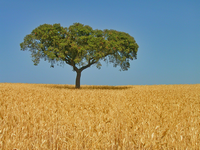At the dawn of the 20th century, the world population was inching toward a modest 2 billion. In the 111 years since, notwithstanding the impact of war, genocide, disease and famine, the global population has soared, reaching 3 billion around 1960 and now quickly approaching the neighborhood of 7 billion. By 2050, the planet will likely be home to 2 billion more.
We may not be witnessing the detonation of the "population bomb" that Paul Ehrlich warned of in his seminal 1968 book, but such rapid demographic change is clearly pushing the international community into uncharted territory. With a limited amount of arable land and a finite supply of fresh water for irrigation, figuring out how to feed a planet adding upward of 70 million people each year looms as one of the 21st century's most pressing challenges.
The push to ensure global food security transcends the desire to avoid repeating the famines that devastated the Soviet Union, China, North Korea, Ethiopia and so many other corners of the world during the past century. Instead, aid and development organizations today rightly view food insecurity problems as deeply intertwined with issues of economic development, public health and political stability, particularly in the developing world. To maintain order in the international community and prevent the emergence of new failed states in the decades ahead, it will be critical to find innovative means of feeding the rapidly growing populations of sub-Saharan Africa, the Middle East and South and East Asia.

